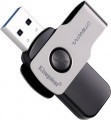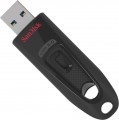Memory size
Total storage capacity. The larger it is, the more information can be simultaneously written to a USB flash drive. For comparison: the size of text documents rarely exceeds 1 MB, audio files and photos usually take several megabytes, short videos — several tens of megabytes, and a DVD-quality movie has a volume ranging from one and a half gigabytes and more. On the other hand, the price of the drive directly depends on this indicator. Thus, many manufacturers have flash drives similar in basic characteristics, differing only in volume — this makes it easier to choose the option that is optimal in terms of price and capacity.
Now on the market there are flash drives with the following volume:
4 GB,
8 GB,
16 GB,
32 GB,
64 GB,
128 GB,
256 GB,
512 GB and more.
Read speed
The maximum speed of reading data from the drive. The
higher this speed, the faster you can rewrite information from a flash drive to a computer disk, which is especially important when working with large amounts of data. In fact, the reading speed depends on a number of factors, including the interface bandwidth (see Connection interface), the design features of the drive and computer, the software used, system load, etc.
Write speed
The maximum speed of writing data to the drive. The
higher the write speed, the less time it takes to transfer information from a computer to a USB flash drive, which is especially critical for large amounts of data. Just like the read speed, in fact the write speed is determined by a number of factors, in particular, the connection interface (see Connection interface), the design features of the drive, system load, etc.
Lanyard hole
A hole in the body of the flash drive that allows you to securely fasten the drive to the strap and wear it as a key fob. As a rule, the
eyelet for the strap is located on one of the ends of the flash drive body (on the side or in the center).

